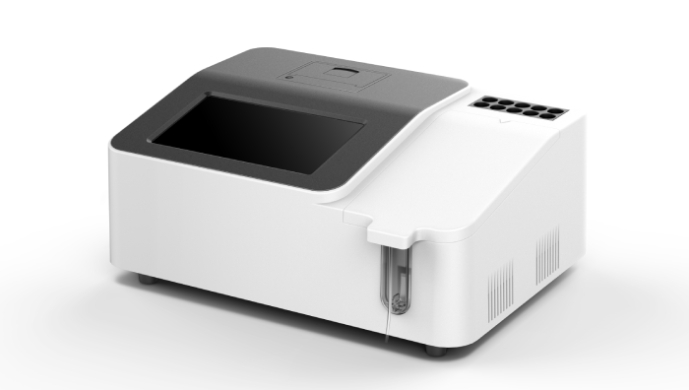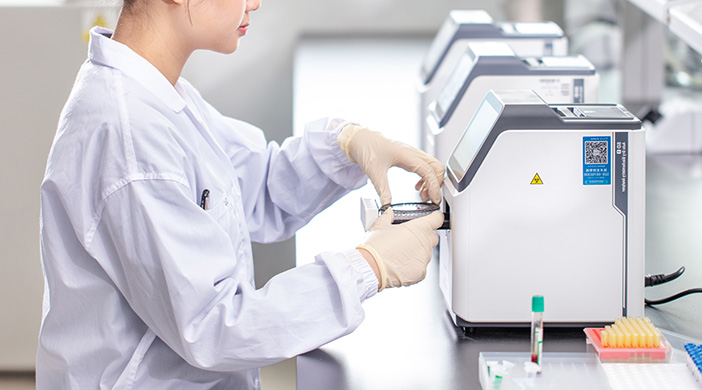POCT is a segment of the IVD industry, and is one of the fastest growing segments in the IVD industry in recent years. With the continuous progress of biotechnology, there are two major trends in medical devices: one is more "high, precise and whole", and the other is "simple, convenient and personal health management". In this context, rapid output of results has become an inevitable trend in the development of medical products.
Point of care testing devices are characterized by fast results and convenience (small sample size and easy operation). In the case of acute diseases, the time to diagnosis is crucial. In the case of infectious disease outbreaks, screening efficiency is critical. When it comes to the management of chronic diseases such as glucose monitoring, simplicity is the smart choice. As far as IVD classification is concerned, POCT is a unique presence in that it is not classified according to sample type or method, but is proposed according to application scenarios.
2 types of POCT devices
1. small handheld POCT devices
There are a variety of small POCT devices on the market, ranging from simple blood glucose meters to, for blood gas analysis, sophisticated small cassette devices. These devices are truly portable and are often used by the patient themselves or by a healthcare professional near the patient, such as at the bedside, in a clinic, or in the patient's home.
Their mobility means that the way these devices are used (i.e., the operational workflow) is often different from the use of large or desktop devices. They are precise in dosing, simple to operate, and inexpensive. For example, small portable devices often use capillary samples applied directly to the POCT machine without the need for sample containers or transfers.
2. Larger benchtop POCT devices
These devices are similar in design to some of the instruments used in central laboratories. They are usually variations of devices used in traditional laboratories. They have high throughput and high accuracy. These point of care testing devices can be moved to outpatient clinics, hospitals and community health departments to provide services such as diagnostic testing and care. Because such devices are better suited for large-scale scale-up, often in resource-poor settings, manufacturers need to reduce the size and complexity of the devices so that they can be operated by personnel without laboratory training. Technologies such as miniaturization and computers are facilitating the successful development of such devices to meet these needs.
Benchtop POCT devices
The stringent requirements of POCT diagnostics present many challenges for the manufacture of such devices. For example, assays with high sensitivity and specificity of analysis are key in POCT diagnostics and require the use of minute amounts of samples. Another challenge is combining the detection components with other fluid conditioning elements on a single platform. However, these challenges may be overcome by microfluidics.
MICROFLUIDICS-based POCT devices are widely used in molecular biology reaction experiments on cell growth and analysis platforms. the advantage of MICROFLUIDICS is the precise control of sample and reagent amounts and flow rates, which allows the separation and detection of analytes with high precision and sensitivity.
MICROFLUIDICS-based POCTs provide a powerful platform for desired biochemical and chemical analyses due to their ease of manufacture, low reagent usage, short response times, improved sensing parameters, and continuous monitoring of the desired analytes.
The ideal point of care testing devices should have 7 characteristics
1. Fast and reliable response
The testing time should not be longer than 1 hour, and the procedure should be as simple as possible, with as few steps as possible, and in accordance with the basic rules of good laboratory practice.
2. Accuracy
The sensitivity and accuracy of the test should meet the regulatory limits required for the particular application, improving the performance of conventional tests so that medical decisions can be made without the need for further expensive testing and reducing the impact on public health costs.
3. Ease of use
The test should be easy to perform by unskilled personnel after simple training and the results should be clear and easy to understand.
4. Self-control
Once the user simply collects the sample and feeds it into the device, sample handling, analysis, data interpretation and waste product storage should be as free of user intervention as possible.
5. Portable and durable
Testing should be performed in the field whenever possible. This means that the product should be portable, durable, suitable for different means of transportation, and have a long shelf life. Even instruments do not need electricity to work and consumables do not need to be refrigerated.
6. Low cost
These tests should be cheaper than standard tests and should reduce the cost of patient care.
7. Multiplex capability
Multiplex immediate tests (xPOCT) are capable of performing multiple analyses simultaneously. point of care testing devices allow for complete characterization of biological samples and improved clinical diagnosis.


